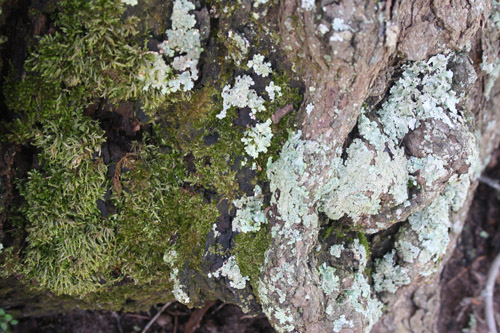Sometimes what looks like s serious problem for a plant’s health is not. Other times a little leaf discoloration could be a sign of major problems.
Take lichens for example. Lichens are those funny looking grey things that look like wads of paper on trees. Many times — especially over the past couple of years — I've had distressed homeowners tell me, "This stuff is killing my shrubs." Nope. It’s just another sign of continuing drought.
Lichens are a combination of algae and fungus. They don't harm trees, but they can be a sign of a tree with problems.
The algae needs sunlight to carry on photosynthesis, therefore it usually grows in a sunny spot. Trees with low vigor and sparse foliage have more sunny spots along their trunks and roots. Lichens love trees with more sunny spots. They don’t damage the tree or shrub, but they are signs of stress.
Many times when I check sick looking shrubbery or trees for clients, I find that the problem was caused by a nutrient deficiency. If you have trees or shrubs in your landscape that are showing yellowing leaves, leaves with yellow veins or other discolorations, you may have a nutrient deficiency. This problem is especially prevalent in the early fall. If you haven't fertilized, your shrubs have used up all the soil’s nutrients during the spring and summer growing season.
If you suspect this problem, it would be a good idea to take a soil sample and get it tested. Then you can correctly fertilize your shrubs, which should hopefully correct the problem.
Lawn mower and weed eater blights are also common problems in shrubs. Young trees are extremely susceptible to damage from mechanical nicks from yard equipment. These wounds can scar their trunks and allow disease to take root.
To prevent the problem, put a good amount of mulch around young trees so you’re not tempted to trim or mow so close to them. For smaller shrubs, a piece of corrugated black plastic drain pipe makes an effective trunk guard. Use a section of pipe about six-inches tall and wide enough to give the trunk plenty of clearance.
It’s been a tough couple of years for outdoor shrubs and young trees. Drought has reduced the vigor of many shrubs, while other trees and shrubs planted in poorly-drained areas may have been damaged by too much water.
One might think that giving plants the right amount of water could resolve this problem, but sometimes trees and shrubs damaged from long-term drought or waterlogged soils never recover. Those that do recover require several seasons to do so. This is one of those scenarios where an ounce of prevention is worth a pound of cure.








